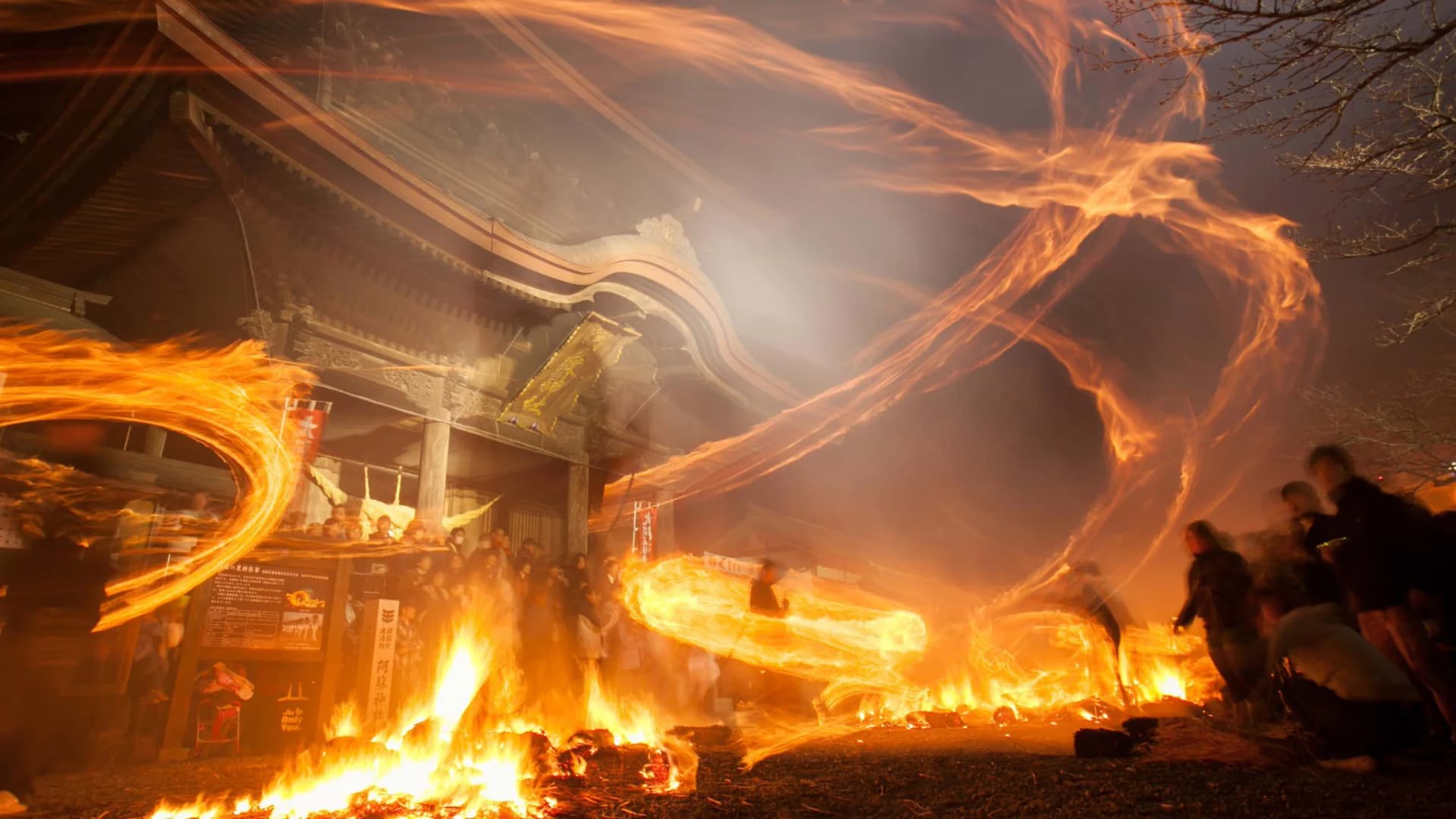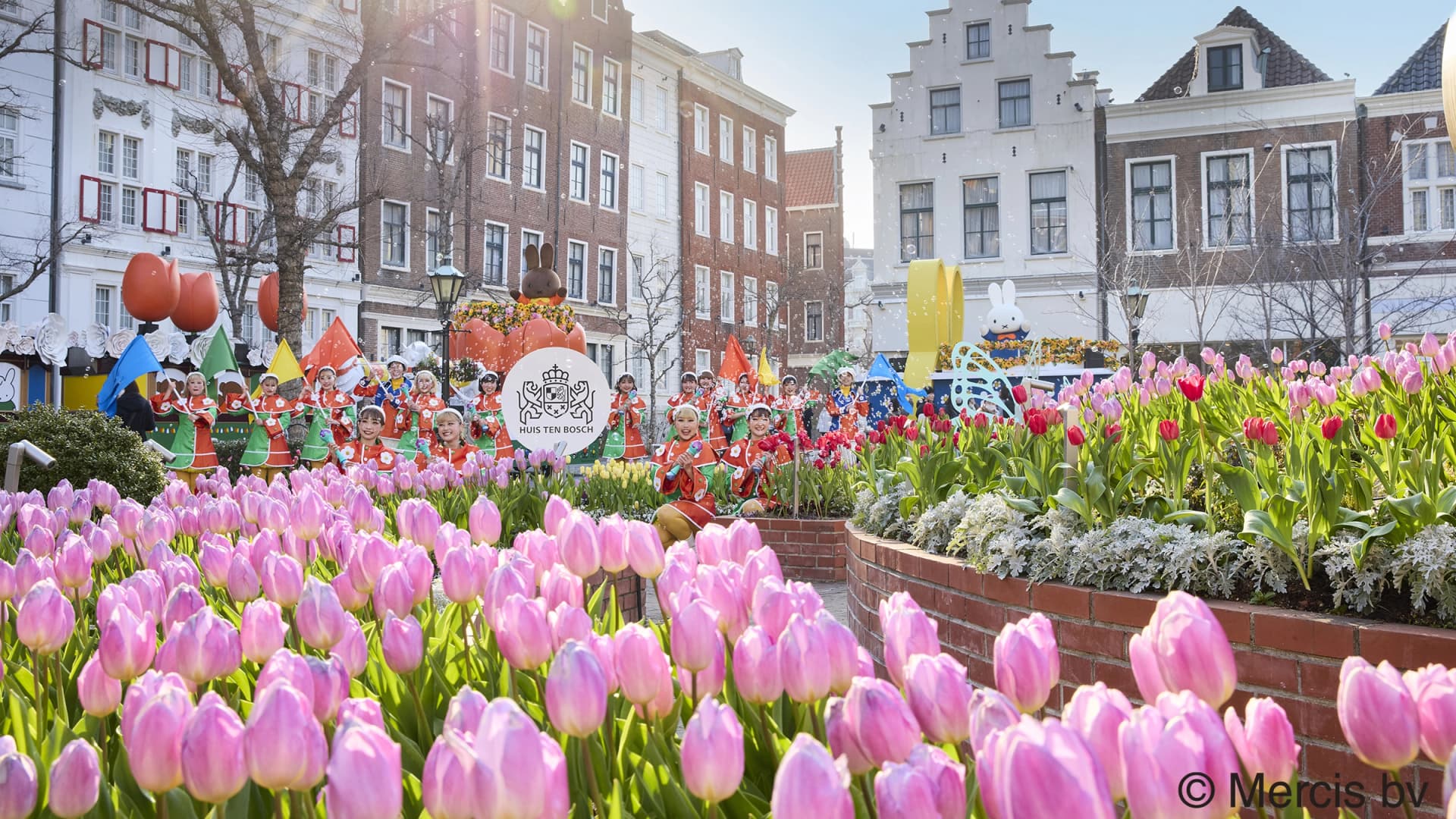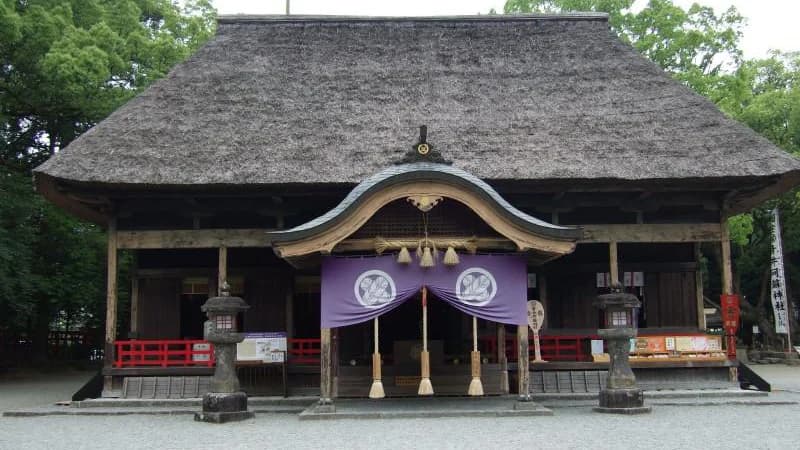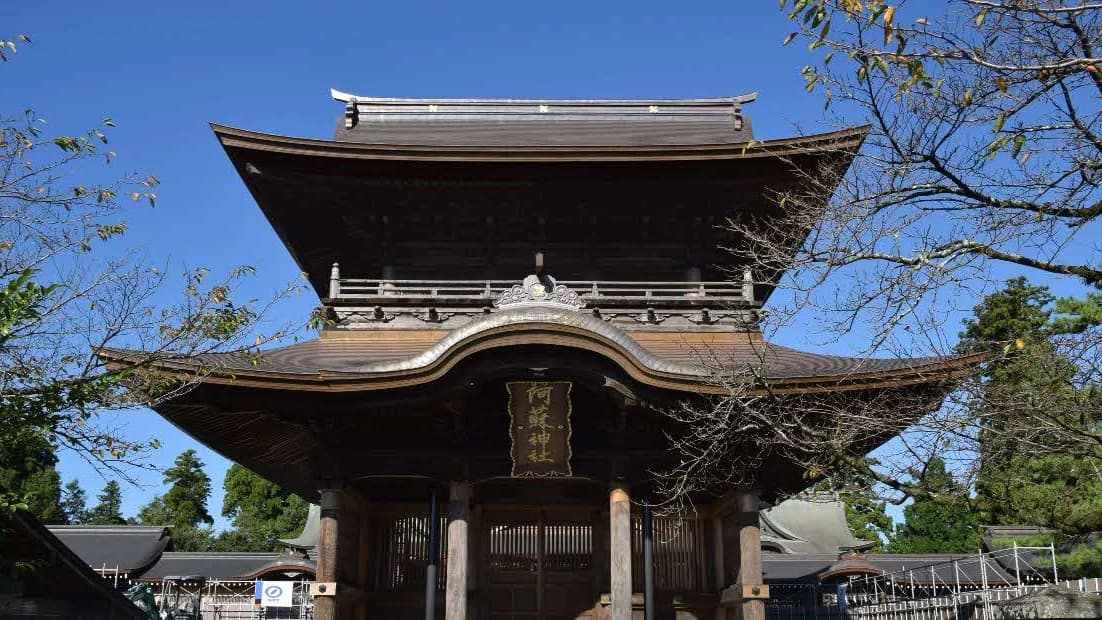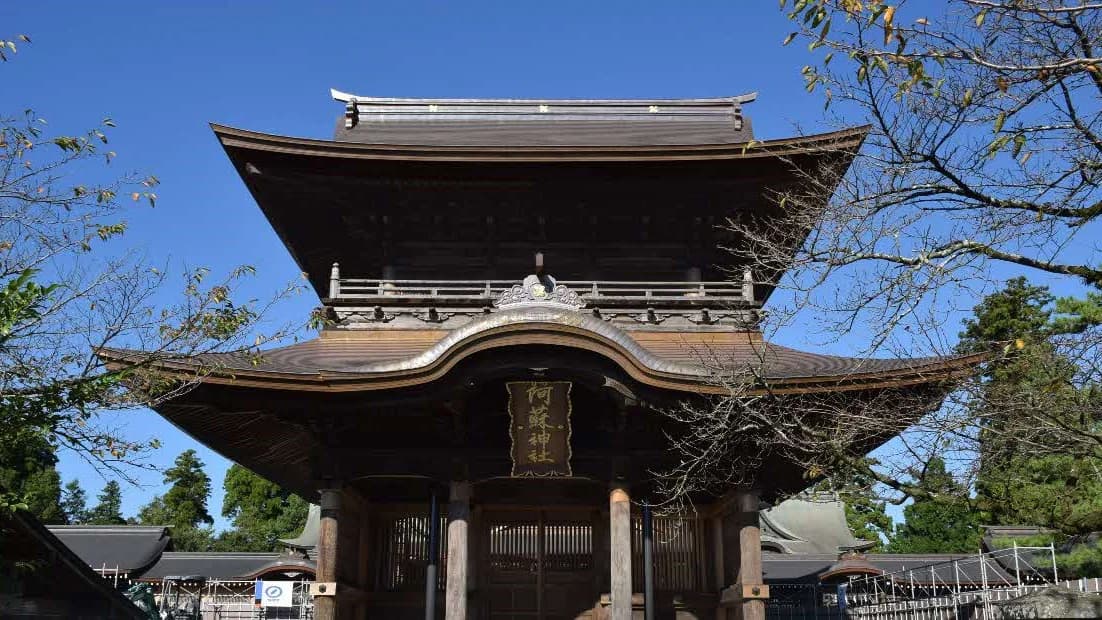
Aso Shrine
阿蘇神社- Miyaji StationHōhi Main Line
- Walk 14 minutes
Aso Shrine is an ancient Shinto shrine with over 2,000 years of history. It venerates Takeiwatatsu-no-Mikoto, the grandson of Emperor Jimmu who developed the Aso region, along with 12 family deities. Historically, the shrine fused Shinto with volcanic worship of Mount Aso, whose crater has long been regarded as a sacred body of the deity. As the chief shrine of Higo Province in the past, Aso Shrine has enjoyed widespread reverence throughout Japanese history.
The Aso family, hereditary priests of the shrine, are among Japan’s most distinguished old families. In the medieval period, they became a prominent samurai clan representing Higo Province. The shrine’s extensive network of over 500 branch shrines is a testament to this legacy.
Shrine Architecture and Cultural Significance
The current shrine complex was reconstructed between 1835 and 1850, with contributions from the Kumamoto Domain. Six structures — including the main halls (shinden) and the tower gate (rōmon) — are designated as Important Cultural Properties of Japan. The rōmon, standing at 18 meters, is the largest double-gated tower in Kyushu and is considered one of Japan’s three great rōmon gates.
The six key buildings face east in symmetrical alignment along the shrine grounds:
- First Shinden (1840): five-bay, irimoya-style roof
- Second Shinden (1842): five-bay, irimoya-style roof
- Third Shinden (1843): three-bay, nagare-zukuri style
- Rōmon (1850): three-bay, double gate
- Miyuki-mon (1849): four-legged gateKangyo-mon (1849): four-legged gate
All six structures are made of zelkova wood, originally with kaki-buki (persimmon bark) roofs, now replaced with copper roofing. Elaborate carvings of wave motifs and clouds adorn the beams and brackets, exemplifying the architectural style of the late Edo period. The master carpenter Mizutami Motokichi (1815–1887) played a key role in the shrine’s construction, designing plans from a young age and becoming the lead architect at just 22. He later served as an official craftsman for the Kumamoto Domain.
The 2016 Kumamoto Earthquake caused extensive damage to the shrine, including the collapse of the rōmon and worship halls. Restoration work was completed in December 2023, returning the shrine to its former grandeur. The restoration was carefully documented using historical records, inscriptions, and architectural studies, preserving the legacy of Aso Shrine for future generations.
Mount Aso and the Upper Shrine
The crater at the summit of Mount Aso has long been regarded as the “divine pond”, the sacred body of the Aso deity. The Upper Shrine (Sanjo Shrine) is located at the rim, where worshippers can view the crater from the shrine hall. Historically, this shrine was called the “Upper Shrine”, with the main shrine at the foot of the mountain referred to as the “Lower Shrine”.
In ancient times, volcanic activity at Mount Aso was carefully observed and reported to the imperial court, highlighting the shrine’s national significance. Today, the Crater Pacification Ritual (Kakō Chin-sai) is held in early June to pray for calm volcanic activity. The Upper Shrine building, designed by engineer Takahashi Sunami, was reconstructed in 1958 using reinforced concrete while preserving the traditional wooden style.
Upcoming Events
At Hey Japan!, we strive to keep the places listed on our website as current as possible. However, it is important to note that location owners or management may make changes to their plans, including canceling events, altering opening times, or modifying admission requirements, without prior notice. To ensure that you have the most accurate information, we recommend checking official websites before visiting any location.
Last Updated:
